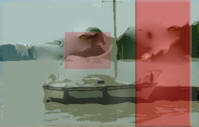| Every
cruising boat should have a VHF radio whether stationary or hand held.
Each VHF radio is considered a radio
station by the Federal Communications Commission.
Channel 16 is used for emergencies and
for hailing. Law enforcement agencies and the Coast Guard monitor
channel 16.
Although you hail on channel 16, you
never use it for conversation. Immediately communicate with the
party you hail and arrange to switch to another "working"
channel. |
VHF Channel for US
Radio Users
Distress, safety, hailing
..............................................16
Intership safety
........................................................... 6
Coast Guard communications
................................. 22A
Port Operations ... 1, 5.
65A, 6A, 12,73, 14, 74, 63, 20, 77
Navigational
......................................................... 13, 67
Non-commercial
............................ 68, 9, 69, 71, 78A, 72
Commercial .... 1, 7A, 8,
9, 10, 18A, 19A, 79A, 67, 77, 80A, 88A, 63
Public Correspondence ....
24, 84, 25, 85, 26, 86, 27, 87, 28
|




![]()